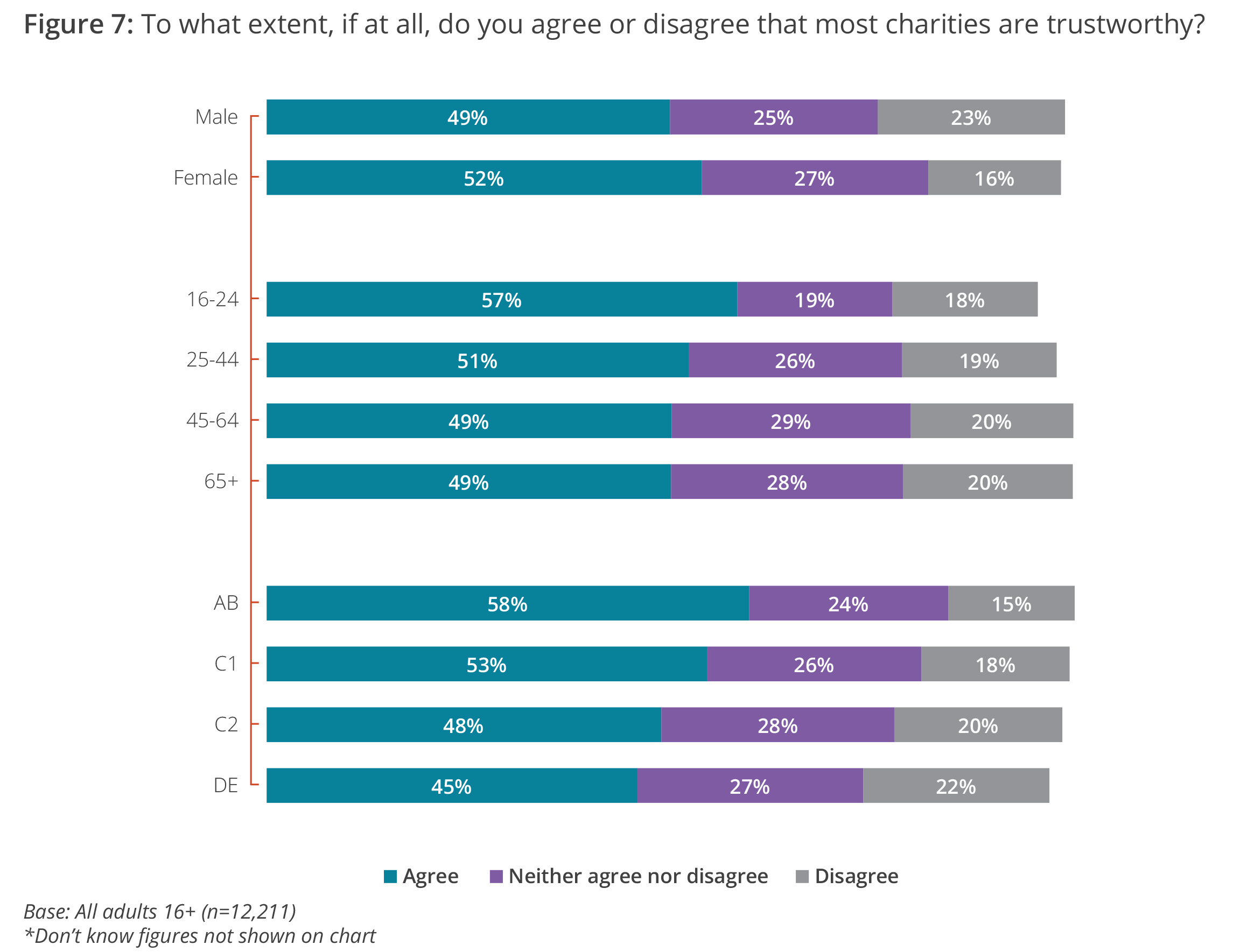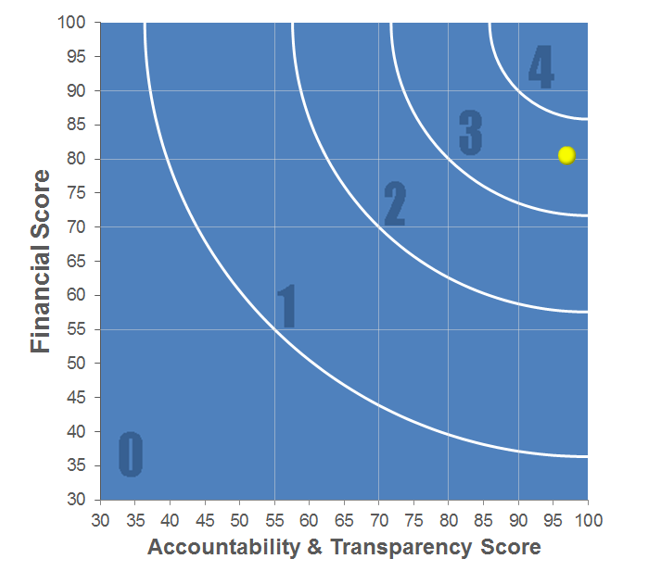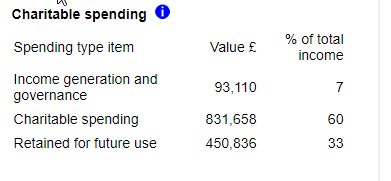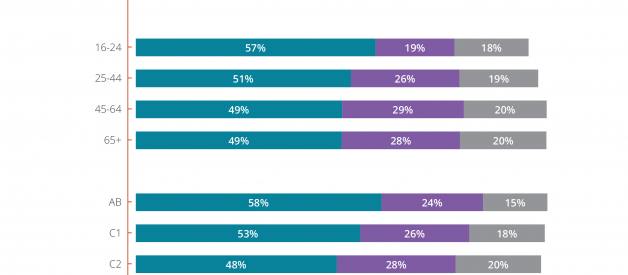
While charities received a staggering $ 410.02 billion in 2017, up from recent years, the number of people donating continues to plummet.
In 2000, more than two-thirds of Americans donated to charity, while just 55.5% gave to charitable causes in 2014.
Part of the reason why is that middle-class families have experienced increased expenses and decreased earnings, meaning they have less money to give away to charity, even when they want to. But a big cause for this drop also lies in the public?s perception of how charities use money once they have it.
Traditional charities ? those that are built on fiat cash ? have routinely been embroiled in scandal in recent years for scams, wasted resources, misallocation of donor funds, and public response to expensive admin, fundraising, and program overhead.
When reported on by watchdog organizations and news outlets like Consumer Reports and the New York Times, reports of high overhead and misuse of funds can deeply cut donations. This mistrust of charities that misuse funds can not only affect the offending organization but also the willingness of donors to give to other charities, hurting those that need the money most.
Though a certain amount of overhead is necessary for charities to operate, we?ll break down why donors today are gun-shy about charitable giving and where donor money goes when traditional charities receive it.
How Charities Have Let Down the Public and Those They Help
 Donors are split on their opinion of charitable giving ? in many cases, down the middle. (Source)
Donors are split on their opinion of charitable giving ? in many cases, down the middle. (Source)
In their most altruistic form, charities exist to help those most in need of aid within our communities and in areas that the average person can?t directly help.
Unfortunately, shady activity and public scandal have marred the reputations of many in the eyes of donors. Instead of helping those in need, many charities have manipulated donors, hidden funding sources and political leanings, misallocated donations, and been caught embezzling.
Recently, Eric Trump has come under fire for rerouting donor funds given to the Eric Trump Foundation to other charities that support his and President Donald Trump?s interests, as well as using his foundation ? and his father?s ? to support business on their golf properties.
In 2016, Cancer Fund of America and three other charities scammed their donors out of $187 million. Cancer Fund of America had used less than 3% of donations on goods and services for cancer patients. The Federal Trade Commission dissolved Cancer Fund of America and Cancer Support Services in response to the scandal.
Kids Wish Network had a scandal of their own in 2013, when it surfaced that less than three cents per dollar was being spent on the kids. Instead, $4.8 million went to the founder and his consulting firms, and a large chunk of the remaining money was spent on for-profit corporate solicitors who were paid to raise more donations. Today, Kids Wish Network spends 82.4% of donations on fundraising, and only 15.6% on programs (well under the best practice of allocating 65% to programs).
Unfortunately, the list of misappropriated donor funds goes on and on.
Additionally, the well-documented ties between charities and corporate influence through large donations have resulted in public scrutiny. In many cases, charities are founded by members of the U.S. Congress or they later appoint politicians to their boards to increase the odds of receiving grants from corporate foundations. But with the funds comes kowtowing to political interests in order to stay in favor.
Charities like the American Red Cross have also fallen from grace when news broke in 2014 of their lackluster performance during crises and PR-motivated attempts to inflate their perceived impact. Such shady activities included:
- officials diverting resources during Hurricane Sandy to specific people for PR purposes
- letting politics guide who received relief
- leaving disaster areas without making resources like food, blankets, and batteries available for victims
- not following procedures to prevent children form being sheltered with sex offenders
- leaving disabled victims in wheelchairs for days when cots were in high demand
- wasting meals because of staff failures to accurately gather information on hungry victims
With such a well-covered and overarching list of charities that have misled donors about how their money is used, it?s understandable that potential donors would rather hold onto their paychecks than give them to a charity that may misuse the money.
Where Your Money Actually Goes When You Give to Traditional Charities
Shady practices by some charities, combined with donors overestimating their knowledge of charities, don?t mean just negative attitudes ? they actively hurt those in need by decreasing the money available to organizations that actually do good work.
Additionally, the measurement of ?overhead costs? vs. ?program costs? can be misleading, which is why many watchdog and news organizations have shifted focus to evaluating the impact of charities rather than the breakdown of their books. This is largely because cost breakdowns don?t always correlate to the good done by the organization and, with clever accounting, some charities have exaggerated their on-paper impact .
As a result, donors are often skeptical of how traditional charities spend their money. Seven out of 10 donors who think they know how much their favorite charities spend on overhead are actually off by at least 50% .
However, the business of running a charity comes with unavoidable costs, despite the best intentions. In some cases, charities can cut overhead spending down to 7% , as is the case with PetSmart Charities , well below the recommended 23% .
In an ideal world, most charities would prefer to spend 100% of their funds on the people who need help. But to keep the lights on and the donations coming in, charities are stuck allocating funds as best as they can and are held to overhead standards that often don?t reflect whether they?re doing the most important thing: good work .
So, how do charities actually spend their money (for better or worse)? It typically breaks down into three categories:
1. Admin Costs
While charities aim to give as much as possible, they ? like for-profit businesses ? require staff and infrastructure in order to keep their mission going.
But, historically, donors haven?t been really understanding about these necessary costs.
Most donors would like to see charities spend 19% of funds on admin but believe that the typical organization actually spends 28%. In reality, they?re pretty off, and most charities spend less than 15% of their funds on overhead costs, including admin expenses.
But in many cases, it?s not the amount spent on reasonable day-to-day costs that makes donors think poorly of charities. Instead, it?s the gap between the idea of charity as a selfless act of good and the organization leaders raking in large salaries, made worse by the lack of transparency surrounding their salaries.
For instance, United Way Worldwide was ranked as the largest U.S. charity in 2018 and brought in $3.9 billion in funding, $3.6 billion of which went to charitable services, $243 million went to admin and $325 million went to fundraising. All of that is well within the ideal budget breakdown.
But when you look at the breakdown of admin costs by themselves, you see that more than $1.2 million of their admin costs went to one individual?s compensation alone. When the average person hears that, it?s not the money spent on overall admin costs that makes them cringe, but the idea of company leadership getting rich off of helping others.
On the other hand, though it can seem like a lean admin budget means that a charity operates as efficiently as possible, donors should be wary of the assumption. Instead, charities must find a balance between spending too much on admin costs and restricting key resources to the point that they can?t carry out their mission.
2. Fundraising Efforts
Fundraising typically covers costs related to marketing, events, staff, and advertising that are dedicated to helping a charity raise more money. Unfortunately, the old adage ?you have to spend money to make money? rings true in the charity realm.
But exactly how much money charities spend on fundraising can vary wildly, depending on how their organization works.
For instance, Habitat for Humanity , the eighth largest charity in the U.S. in 2018, spent $131 million of its $1.9 billion ? about 7% ? of funding on fundraising. Whereas, Direct Relief ? the seventh largest U.S. charity the same year ? spent only $2 million of the $1.2 billion it raised, or about .2%.
Those that focus on relatively few, but large, donations typically have higher fundraising costs due to more expensive donor events. In contrast, more grassroots-focused charities that rely on volunteer and member involvement over employees have reported fundraising costs of .6% or less.
3. Programs and Aid
As we?ve talked about, the common thinking is that charities should never spend less than 65% of their funds on programs. Despite the news of charities lining their pockets with donations or using them to further political agendas, many charities are well above this 65% threshold.
For instance, AmeriCares , ranked the third largest U.S. charity in 2018, spent $1.912 billion of its $1.928 billion in revenue on charitable services, or about 99%. And Task Force for Global Health , the fourth largest U.S. charity , actually gave more than they earned last year. Of the $2.197 billion they raised last year, $2.206 billion on fundraising, a $16 million loss.
But the dollar amount alone can be an unfair way to evaluate how much good a charity does. Instead, donors should look at the impact those dollars have in communities.
 Charity Navigator ? a leading watchdog organization ? has adjusted their charity reports from being focused on overhead to rating organizations based on accountability and transparency, as well as finance. (Source)
Charity Navigator ? a leading watchdog organization ? has adjusted their charity reports from being focused on overhead to rating organizations based on accountability and transparency, as well as finance. (Source)
If, for instance, a charity spreads its funds widely among a lot of recipients in different communities without investing an impactful amount in any one area, they could be viewed as being less effective. Whereas, charities that focus concerted efforts on a handful of communities and people could be viewed as higher impact, therefore doing more good for every dollar.
How Charities Can Fix Their Public Opinion Problems
Restoring and fostering donor faith comes down to one simple word: transparency.
By focusing on being more transparent about where donations are coming from, how that money is being used, and where on the ground it?s getting distributed to, charities can bolster the feeling among donors that their dollars actually matter and have an impact on the cause.
 Human Aid, based in the UK, recently responded to criticism of their budget by releasing a transparent response that included their funding break down, helping to curb negative public opinion. (Source)
Human Aid, based in the UK, recently responded to criticism of their budget by releasing a transparent response that included their funding break down, helping to curb negative public opinion. (Source)
The challenge now lies in finding the best way to implement this kind of transparency and overhead decrease. Organizations can start by telling donors about the grants and political ties that board membership comes with, keeping better track of why overhead and admin costs rack up how they do, and focusing on doing the most good per dollar possible.
Thankfully, although there will always be people in need, the ability for charities to act as a conduit between concerned donors and communities will only improve as they embrace more transparency and modern donation models.

